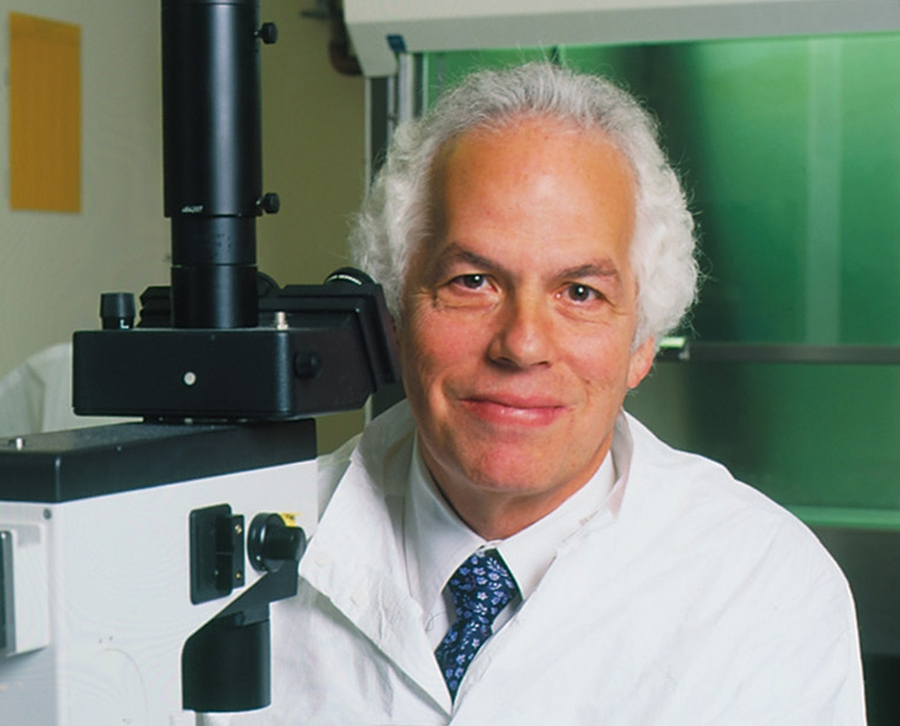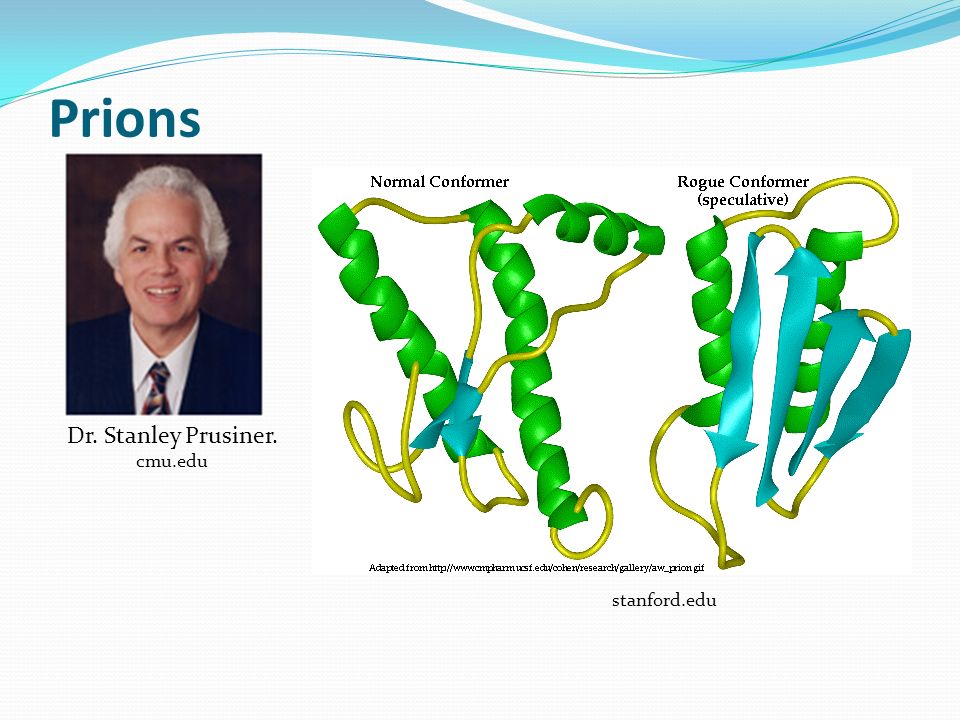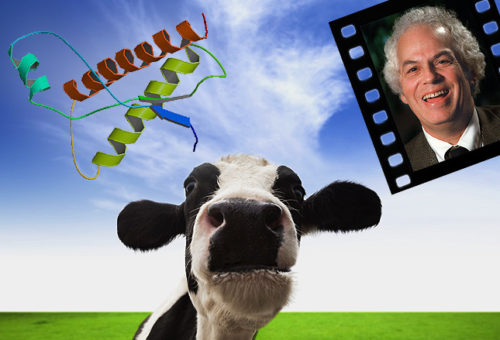Stanley Prusiner: Neurodegenerative Diseases
We’re going through the top 50 doctors who have made a lasting impact on medicine throughout all time—at least according to a heavily read medical magazine which had its “best people” scratch their heads on the matter several months ago.
Stanley Prusiner M.D., Mad Cow Disease and Prions
I dutifully followed the list as they posted it over several installments and couldn’t argue (much) that these doctors impacted medicine (perhaps not in the order they gave); but, from the vantage point of a pediatrician I personally was impacted that we should be incredibly grateful to them—if only on behalf our children.
Stanley Prusiner (1942- ) – #43
Heresy to Orthodoxy, Hate Mail to Honoraria
Dr. Prusiner is the first of the 50 influential physicians we’ve mentioned who is still alive. Making his mark in life during the era of the internet, he was inflicted with all the hateful detraction that being able to ignorantly speak in anonymity gives cowards. Still, we wouldn’t be mentioning him if he hadn’t been proven correct—and won a Nobel prize to boot!
Early Life and Education of Stanley Prusiner
Stanley Benjamin Prusiner M.D was born in Des Moines Iowa on May 28th, 1942 the son of Lawrence Prusiner, an architect, and Miriam Spigel Prusiner. He spent his childhood and early school years in Des Moines and Cincinnati. At Walnut Hills High School he became known as “the little Genius” for his groundbreaking work on a repellant for Boxelder Bugs.
A bit unfortunately for him, his intelligence, upbringing and early successes gave him (in his words) “indefatigable self-confidence”; which trait apparently endures to the irritation of others and set the stage for considerable ill feelings in his life’s work.
He received a Bachelor of Science degree in chemistry from the University of Pennsylvania then graduated from the University of Pennsylvania School of Medicine with an M.D.. He completed an internship in medicine at the University of California, San Francisco (UCSF); then, moved to the National Institutes of Health (NIH), where he studied glutaminases in the bacteria E. coli.
After three years he returned to UCSF to complete a neurology residency in 1974 and joined the faculty of the neurology department.
Later life: The “firestorm” of discovering the Prion

Prusiner was captivated by the laboratory very early in his life. The neurology wards of UCSF during his residency served him a patient who sent him solidly into the lab and cemented the course of his career and life.
He described her as a “slim, tanned 60-year-old woman from Marin County who was having trouble unzipping her golf bag.” Within months she had died of Creutzfeldt-Jakob disease, one of a few known diseases effecting the brain’s structure and invariably fatal. They call these diseases “spongiform encephalopathies” because they leave the brain of humans and animals “sponge-like,” soft and riddled with holes.
In the early ’70s these diseases were completely and totally baffling to science (more than they still are). They happened. We knew what they did to the brain tissue. A few seemed to have a genetic basis; but, many occurred out of nowhere in episodes and “contagion-like” clusters.
There was absolutely NO trace of any known causative agent! None. No bacteria, no fungi, no parasites, no viruses and not even a trace of the usual DNA or RNA that is the footprint of infection with a living agent.
After spending probably more time puzzling this than anyone on the planet he began to believe that some normal body protein was the culprit and when he began to voice his opinion—that was when his “colleague” problems began; later described in detail in his memoir: Madness and Memory.
The “normal” hurdles any researcher faces turned meaner and darker then eventually to open hate-mail and hostility. A grant application was not only rejected but actually “disapproved,” usually a kiss of death to a project.
The combination of the usual name-calling of wannabe’s using anything to tear down a competitor, along with his own tendency toward arrogance, triggered personal attacks not seen in the “gentleman’s game of research” during prior years. Literally hundreds of researchers frantically designed studies specifically to prove him wrong.
Prior to one conference where he was to present his recent data a colleague told him that the organizer “wants your data there” but “would rather not have YOU there.” He went anyway, only to find “hostility oozing from the very stones.”
The Prion
You know, right, that bacteria, yeasts, protozoans etc. are living things able to inhabit human bodies and cause disease. And you know that viruses are tiny fragments of DNA or RNA which take over and “trick” normal human cells into doing their bidding. BUT, what is a Prion (PREE-on)?

Listen carefully, I’ll tell you but it’s a bit of a stretch. Prusiner’s research revealed that they are protein, the same stuff that normal human cells are made of; and, in fact, seem to be made identical to a human’s normal protein except “bent” or “laid out” differently.
Click to enlarge the graphic to the right. It represents a long string of “amino acids” arranged in a specific sequence. It’s that specific sequence which makes the difference between a muscle protein, a nerve protein and a skin protein. All the proteins use the same amino acids as building blocks but put them in a different order and they FOLD back on themselves in a different way to make a different-shaped “lump”: e.g. muscle tissue vs nerve tissue.
The thing is, all sequences have a “preferred” or “normal” way they want to fold; BUT, what if at a critical point in their “folding” they are given a tiny “nudge” in another direction to fold a different way?
What Dr. Prusiner found out is: you get a different shaped “lump” of what seems to be the same sequence. Then, it seems, it’s the “defective” protein which starts to give “pushes” to yet other proteins, then others, and others down the line. Sort of acting like a “template” which lies in wait to, at the last minute, subvert the cell’s wonderful work of making it’s protein into a nightmare!
It’s sort of like the disease causing itself. It’s sort of like (but not exactly): “one bad apple starting to spoil the whole bunch.”
Over and over, every test he did kept pointing that it was the body’s own protein doing the dirty work; while, over and over, his detractors kept having failures trying to find alternatives. Collectively, the detractors’ work kept indirectly proving Prusiner’s work; until… in 1997 they gave him a Nobel Prize!
Prions are not “infectious” like we’ve always known the meaning of the word; but, it’s like a chain reaction which is “infectious in the same sense that the first domino in a line to fall infects the last one.”
Some diehard antagonists still hunt for a virus to prove him wrong, but most have moved on to other more productive research like: HOW DO WE STOP THIS THING?! And, is there some kind of other “trigger” which starts it in the first place?
There are now apparent links for Prions to an array of human neurological catastrophes, including Alzheimer’s disease; which Prusiner and others are still trying elucidate in hopes of finding methods of stopping it or a miracle to reverse it.
He’s also won several other prestigious awards. Once disparaged, his scientific work is now hailed as visionary.
Biographic Summary
Stanley Prusiner, an American Physician and Biochemist who discovered a new class of human pathogens made of protein
Born: May 28th, 1942 in Des Moines Iowa
Died: Living (2017)
Education: M.D., University of Pennsylvania School of Medicine
Known for: Nobel prize for the “discovery” of Prions
Books: ‘Madness and Memory,’ a Memoir About Discovering Prions
Parents: Father – Lawrence Prusiner, an architect; Mother – Miriam Spigel Prusiner
26 Posts in Top 50 Doctors (top50) Series
- 26 - Carlos Chagas, Chaga's Disease & pneumocystis pneumonia. – 10 Apr 2025
- 27 - Charles D. Kelman - Cataracts – 9 Mar 2023
- 28 - Cicely D. Williams, Kwashiorkor, Breastfeeding, Whistleblower – 21 Jun 2022
- 29 - Dame Cicely Saunders, Hospice – 23 Apr 2018
- 30 - David L. Sackett, Evidence-based Medicine – 2 Apr 2018
- 31 - E. Donnall Thomas & Joseph Murray, Bone Marrow Transplants – 23 Feb 2018
- 32 - Elizabeth Blackwell, women in medicine – 29 Jan 2018
- 33 - Elisabeth Kübler-Ross, stages of grief – 5 Jan 2018
- 34 - Watson & Crick, DNA – 2 Dec 2017
- 35 - Mahmut Gazi Yaşargil, Micro-Surgery – 24 Oct 2017
- 36 - George Papanicolaou, Cytopathology, Cancer – 29 Sep 2017
- 37 - Dr. James Parkinson, Parkinson's Disease – 1 Sep 2017
- 38 - Dr. John Snow, cholera – 20 Aug 2017
- 39 - Dr. Joseph Kirsner, GI Joe – 27 Jul 2017
- 40 - Lawrence (Larry) Einhorn, chemotherapy – 16 Jun 2017
- 41 - Robert Koch, modern bacteriology – 21 Mar 2017
- 42 - Stanley Dudrick, TPN – 28 Feb 2017
- 43 - Stanley Prusiner, neurodegenerative diseases – 25 Jan 2017
- 44 - Victor McKusick, medical genetics – 3 Jan 2017
- 45 - Virginia Apgar, anesthesiology & newborn care – 12 Nov 2016
- 46 - William Harvey, circulation – 12 Oct 2016
- 47 - Zora Janžekovič, burns – 26 Sep 2016
- 48 - Helen Taussig, blue babies – 3 Sep 2016
- 49 - Henry Gray, anatomy – 3 Jul 2016
- 50 - Nikolay Pirogov, field surgery – 11 Jun 2016
- Top 50 Doctors: Intro/Index – 10 Jun 2016
Advertisement by Google
(sorry, only few pages have ads)

